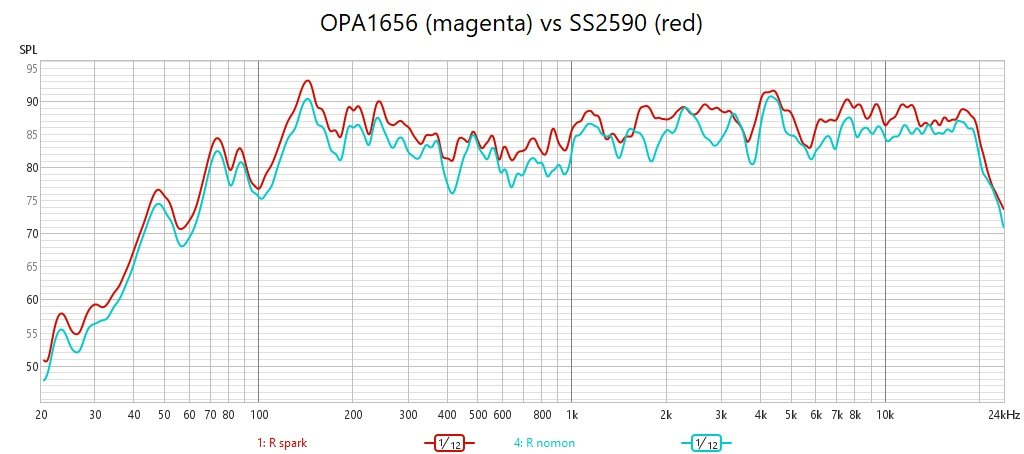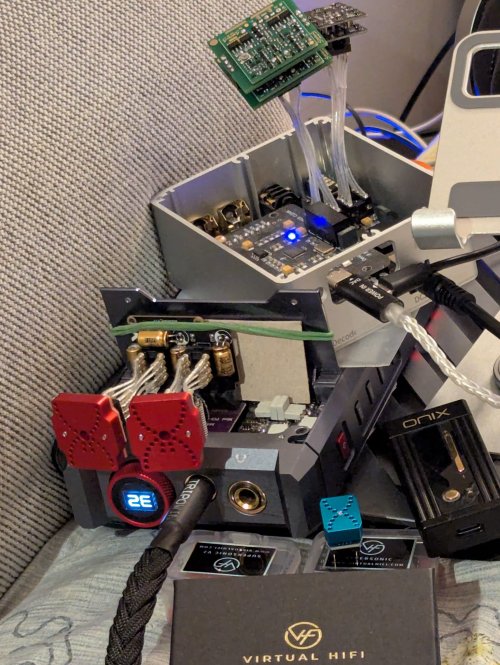BTW, my to go choice for BJT opamp is opa1612, which is excellent in specs and stable in most of my amps.
Have you tried Opa2156? It too is CMOS audio amp. I plan on getting some soon!
I agree with you on opa1692 being too narrow compared to the Opa1656. The Opa1656 has a much wider and better soundstage.
Ha ha it's funny because I'm a wide and far reached detailed and accurate fanboy and some people find too many details to be annoying.
I prefer the opa2211 over the opa1612 (same chip but with less better specs). The Opa1612 is the audio version so they made the specs slightly worse. Just feel the better spec’d amp is better for the circuit (performance/health wise).
I really love LT1028! It's power-hungry, thou. The LT1028 is by far better than the Opa1692. I would describe the LT1028 as a digitally clean sound. Some may prefer more noise with less resolution. I listen mostly to DSD files with 1-bit rate so it's already at low resolution so it ”sounds” more musicial and natural (whatever that means?). However, at higher resolution 24 bit or above in PCM it will sound clinical if the noise levels and op amp/circuit performs at the high res levels.
The reason is that like a HD resolution in tvs, the imaging and clarity changes and improves. That's why in lower resolution like 16 bit they add noise aka Dithering to smooth out some distortion and actually makes it sound pleasant and fluid in files and from track-to-track. I like a little bit of noise myself when its pleasant.
I would imagine CMOS opamp hit their spec sheets performance in CMOS audio application. Meaning the audio circuit designed for them.
I've actually used CMOS LDOs designed for audio and they improve the noise levels immensely! There is a paper out there that I read online comparing the Opa1656 to Opa1612. If I remember correctly in some areas the Opa1656 outperforms the Opa1612 however, CMOS still don’t outperform across the frequency spectrum because CMOS aren’t at ultra low noise levels that bi polar can easily perform from in-put current and output noise??? Something like that.
CMOS look promising for the future when/if they start outperforming even BJTs. CMOS may also be more accurate since most of the best clocks for low powered devices and low frequencies are made from CMOS. It's actually fascinating to read the CMOS and its potential today! At first, like in the 1960s it was hard to stabilize and control them but now...
I like Fets not as clear and less “airy” as bipolar but they are more musical with really pleasant and less fatiguing soundstages in my opinion. They can sound grainy but that depends on the circuit what application it’s in. Some believe Jfets/Fets sound tuber, unnatural and less open. I don’t though.
Just about to order some lt6018 which is supposed to be the upgrade to the lt1028. Also wanna pick up some opa2277 similar specs to Opa1692. Has anybody heard them before??























